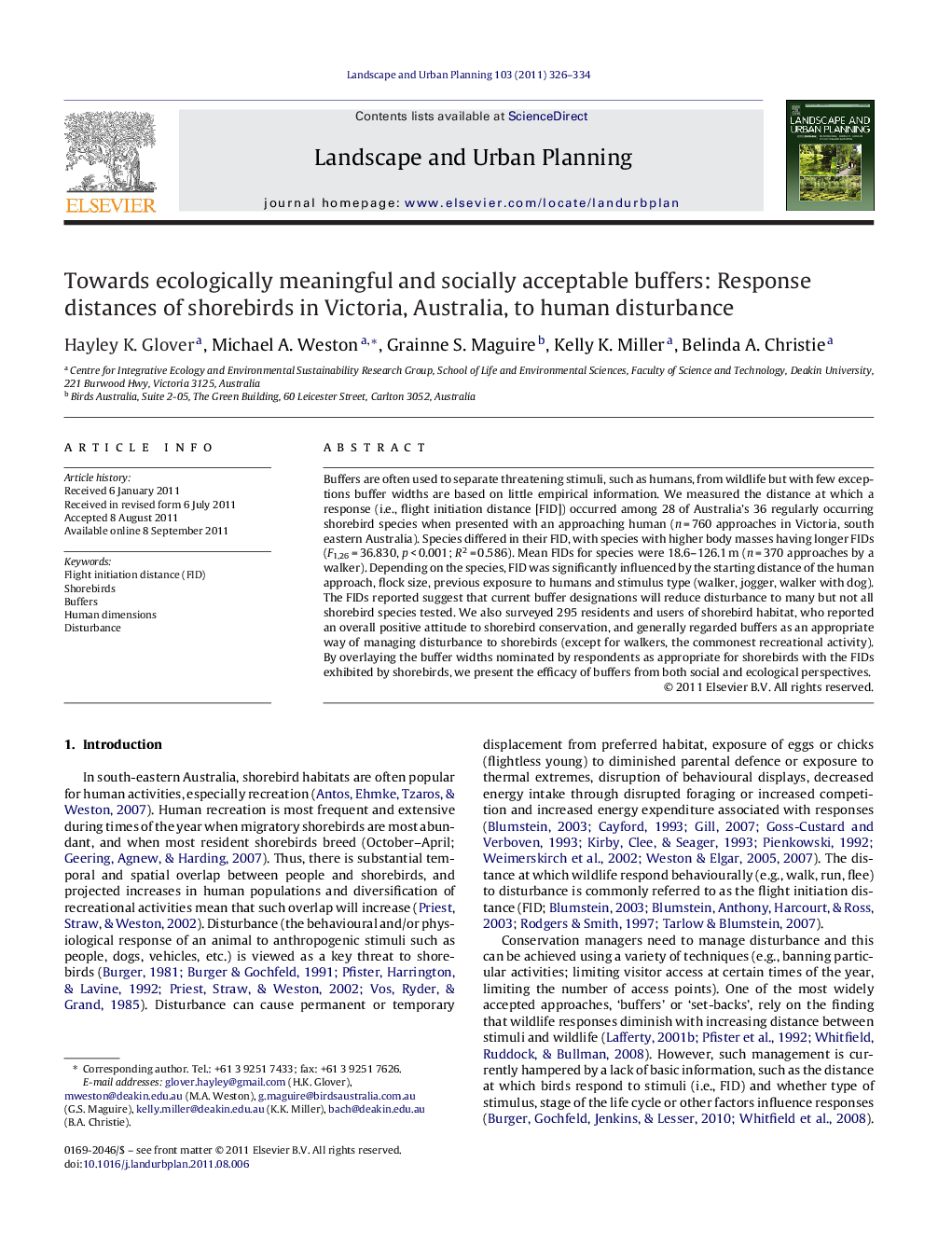| Article ID | Journal | Published Year | Pages | File Type |
|---|---|---|---|---|
| 1049642 | Landscape and Urban Planning | 2011 | 9 Pages |
Buffers are often used to separate threatening stimuli, such as humans, from wildlife but with few exceptions buffer widths are based on little empirical information. We measured the distance at which a response (i.e., flight initiation distance [FID]) occurred among 28 of Australia's 36 regularly occurring shorebird species when presented with an approaching human (n = 760 approaches in Victoria, south eastern Australia). Species differed in their FID, with species with higher body masses having longer FIDs (F1,26 = 36.830, p < 0.001; R2 = 0.586). Mean FIDs for species were 18.6–126.1 m (n = 370 approaches by a walker). Depending on the species, FID was significantly influenced by the starting distance of the human approach, flock size, previous exposure to humans and stimulus type (walker, jogger, walker with dog). The FIDs reported suggest that current buffer designations will reduce disturbance to many but not all shorebird species tested. We also surveyed 295 residents and users of shorebird habitat, who reported an overall positive attitude to shorebird conservation, and generally regarded buffers as an appropriate way of managing disturbance to shorebirds (except for walkers, the commonest recreational activity). By overlaying the buffer widths nominated by respondents as appropriate for shorebirds with the FIDs exhibited by shorebirds, we present the efficacy of buffers from both social and ecological perspectives.
► We describe flight initiation distance (FID) of 28 of Australia's 36 regularly occurring shorebirds. FID was longer in larger species, and varied in relation to a range of factors including exposure to people, and stimulus type, and the distance at which a human approach began. ► Many existing wetland buffers are unlikely to eliminate disturbance to shorebirds. ► We surveyed 202 coastal users and they supported larger buffers for many recreational activities with the exception of the commonest activities (walking and jogging), where they supported small or no buffers.
